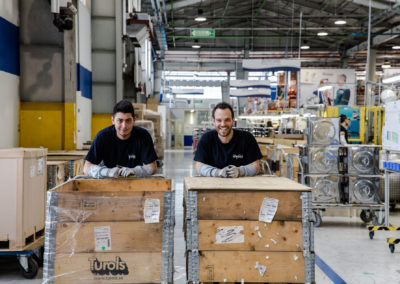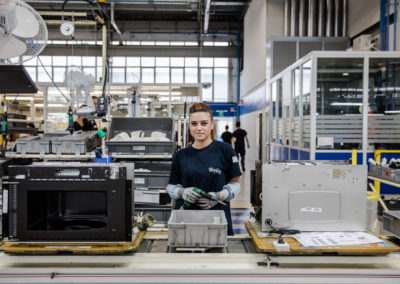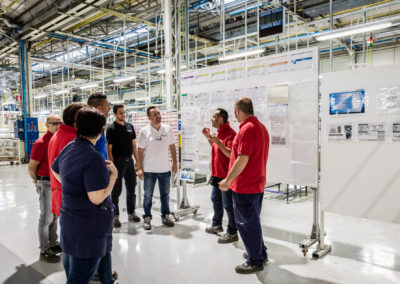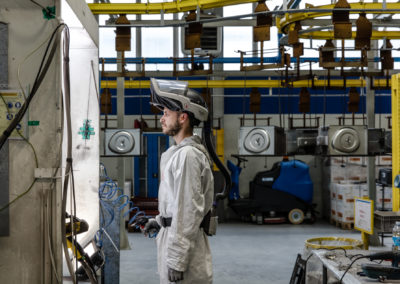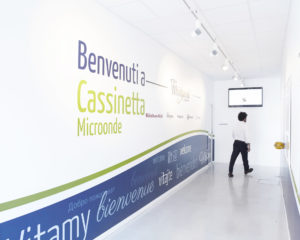
Inside the Cassinetta facility – photo by Alessandro Imbriaco
“The project is made up of two phases,” explains Luca Marini, Corporate Reputation & Interactive Media Manager, who is coordinating this Whirlpool Emea Corporate Communications’ initiative with the local communities. “In the first part, Laura and Mario conduct interviews with the most diverse stakeholders, both inside the facilities and in the neighboring communities, from local authorities and religious groups to the pensioner associations and voluntary workers with whom we collaborate.” It is only after this story hunting process that the second phase starts and photo-shoots can be rolled out on the basis of our selection of the most significant stories identified during the interviews.
“It’s not just consumers but all our stakeholders in general who often don’t know where our products come from. They’re unaware of the innovation, research and commitment concealed in places that have undergone industrial conversion, changes that also affect local communities,” continues Marini, citing the example of the Yate facility in the UK, which now produces dryers but was turning out bombs and explosives 60 years ago. “Working in parallel on both the inside and the outside helps focus on two aspects of central importance to us: the specific identity and values of places on one hand, and the continuity and coherence of certain elements common to all our facilities on the other, the “fil rouge” marking us out as one big family”.
Launched in March following a test in the Cassinetta facility and a 1st leg in Poland, the initiative will run for six months and culminate in an exhibition at HQ in Rho that will then tour the multinational’s other sites in the region and be open to the public. “We’re looking at the possibility of taking part in competitions that focus on this kind of operations, including art biennials,” adds Marini, who also mentions a potential collaboration with ‘Museimpresa’, an Assolombarda initiative that promotes museums set up inside factories, valorizing the country’s industrial history.
“We are working on finding ways to showcase our facilities and their history to the world,” concludes Marini. “This project is a great opportunity for us to demonstrate our long term commitment to communities in which we operate and where we build our products.”
Translation of the original article made by Daniela Colombo, published in the Prima Comunicazione (April, 2017)
